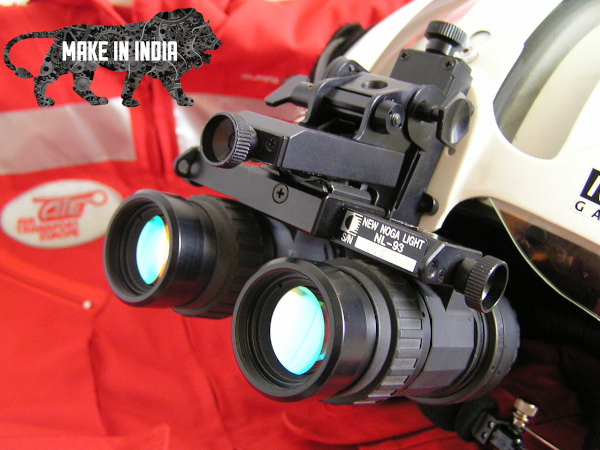The Indian Air Force (IAF) is indigenising Russian night vision goggles that are used by pilots flying the Mi-17 medium lift helicopter. IAF’s No. 3 Base Repair Depot here, that is responsible for the maintenance and overhaul of Russian-origin helicopters, has been tasked to execute the project.
“The design and development of the NL-93 night vision goggle (NVG) variant will be done in collaboration with the Indian industry, for which the public and the private sector is being approached,” an officer said. “NVG is categorised as a critical equipment and it has to be compatible with the Mi-17’s cockpit and operating parameters,” he added.
“The design and development of the NL-93 night vision goggle (NVG) variant will be done in collaboration with the Indian industry, for which the public and the private sector is being approached,” an officer said. “NVG is categorised as a critical equipment and it has to be compatible with the Mi-17’s cockpit and operating parameters,” he added.
By increasing the air crew’s situational awareness due to improved visibility in the dark, NVGs enhance manoeuvrability and navigation, thereby facilitating better air-to-ground tactics and thereby enhancing mission effectiveness.
The essential features of NVG vision include monochromatic image in a field of view reduced to a cone of 40 deg with diminished visualacuity as compared to daytime vision. Consequently, pilots have to continually turn their heads to see to the sides.
The use of NVGs, however, also has medical and physiological implications. It adds to the weight of the helmet, causing increased stress on the neck and spine. Given the device’s limited field of view of about 40 degrees, the pilots have to constantly rotate their heads for wider arc of vision. Air crew are also required to undergo brief training capsules on the use of NVGs.
The IAF began using NVGs in helicopters in 2002 for operation flying such as special heli-borne operations, troop deployment, search and rescue and communication. It carried out its first NVG-assisted rescue in 2007, when it evacuated two injured soldiers, one of them with a serious head injury, in the north-east.
According to IAF sources, once the indigenous NVG for the Mi-17 is certified for use, it would be adapted for other helicopters in the IAF’s inventory such as the Hindustan Aeronautics Limited-developed Dhruv and Rudra as well as the upcoming Light Combat Helicopter.
Source: The Tribune India
Image Courtesy: Wikimedia
You may also like
-
IAF Aircraft Set Course For Exercise Eastern Bridge VII At Oman
-
IAF Set To Host The Indian Defence Aviation Exposition-II At Jodhpur
-
Defence Secretary to co-chair 5th India-Philippines Joint Defence Cooperation Committee meeting in Manila
-
Simultaneous Launch Of ‘malpe And Mulki’, Fourth And Fifth Ships Of Asw Swc (Csl) Project
-
Aatmanirbharta in Defence: MoD signs Contract with HAL for 240 AL-31FP Aero Engines for Su-30MKI Aircraft
